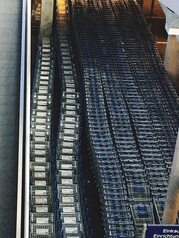The symbiosis between location and lifestyle in your investment.

The choice between investing in a rural or urban property goes beyond simple location; it is a decision that directly impacts your lifestyle and financial future. In Costa Rica, where each region offers a unique charm and different opportunities, understanding this symbiosis becomes crucial to maximize your investment. This article will take you on a journey to explore how location can influence your quality of life and the appreciation of your property, ensuring that every decision aligns with your dreams and needs.
1. The importance of location in the Costa Rican real estate market
Location is one of the most determining factors in the Costa Rican real estate market, and its importance manifests in various dimensions. In a country where biodiversity and geographical characteristics vary drastically from one region to another, selecting the right place to invest can influence aspects such as accessibility to basic services, the quality of the natural environment, and recreational opportunities. Properties located in urban areas tend to offer greater proximity to workplaces, educational institutions, and commercial centers, which is appealing to those seeking a dynamic lifestyle. On the other hand, rural areas can provide tranquility and a connection to nature, ideal for those who prioritize a more relaxed environment.
In addition to individual preferences, location also directly affects the appreciation of a property. In Costa Rica, some areas experience accelerated growth due to economic development or tourism initiatives that attract both investors and permanent residents. A careful analysis of the growth potential of different areas can reveal significant opportunities to grow your investment over time. Understanding how these local dynamics develop is essential to ensure that your choice not only meets your current needs but also offers sustainable economic benefits in the future.
2. Advantages and disadvantages of living in urban areas
Living in urban areas presents a series of advantages that can be very attractive for those seeking a dynamic lifestyle full of opportunities. Proximity to essential services like hospitals, schools, shopping centers, and entertainment options is one of the main benefits. Additionally, urban areas often offer a greater variety of job opportunities, which can translate into better economic prospects and access to a broader professional network. The developed infrastructure also facilitates transportation and mobility, allowing residents to enjoy an active and diverse social life. These characteristics lead many people to prefer investing in urban properties, as their appreciation tends to be higher due to constant demand.
However, living in urban environments is not without its disadvantages. One of the most notable aspects is the high cost of living, which includes higher rents and expenses related to transportation and utilities. Additionally, urban areas often suffer from issues such as traffic congestion and elevated levels of pollution, which can affect the quality of life. The lack of green spaces and a natural environment are also common concerns for those who value a more tranquil lifestyle connected to nature. Therefore, it is essential to assess how these factors align with your personal needs before making a decision about where to invest your money in real estate.
3. Benefits of choosing a rural lifestyle
Choosing a rural lifestyle can offer a range of benefits that go beyond a simple connection with nature. Firstly, the rural environment tends to be less hectic and more peaceful, promoting better mental health and overall well-being. The reduction of noise and pollution, along with direct access to natural landscapes, allows residents to enjoy outdoor activities such as hiking, farming, and wildlife observation. This type of life fosters a closer relationship with the environment and can result in a more sustainable lifestyle, where natural resources are valued and eco-friendly practices are embraced.
Additionally, living in rural areas can translate to significantly lower living costs. Property prices are often more accessible compared to urban areas, allowing investors to acquire larger plots of land or houses with additional features, such as gardens or cultivation areas. This economic advantage not only benefits the family budget but also opens the door to new business opportunities related to agriculture or rural tourism. As the demand for authentic and sustainable experiences grows, those who choose a rural lifestyle may find unique niches to generate additional income while enjoying the charm and serenity of the countryside.
4. Impact of tourism on rural vs urban properties
The impact of tourism on rural and urban properties is a determining factor that can influence both the profitability of the investment and the lifestyle of the owner. In urban areas, tourism is often linked to a higher demand for short-term rentals, which can translate into steady income for investors. Properties located near tourist attractions, restaurants, and services often experience a significant increase in their value due to the constant flow of visitors. This dynamic creates opportunities for those looking to capitalize on the tourism potential of cities, although it also involves greater competition in the market and the need to adapt to seasonal fluctuations.
On the other hand, rural properties present a different appeal. The rise of ecotourism and interest in getaways away from urban hustle and bustle have led to an increase in demand for this type of real estate. Investing in a rural property not only allows for enjoyment of a privileged natural environment but also offers the possibility of generating income through tourism activities such as agritourism or vacation rentals. However, this model requires a long-term vision and may depend more on external factors such as local infrastructure and tourism promotion. Thus, each location presents its unique challenges and benefits that must be carefully weighed when deciding where to make your investment.
5. How access to services affects your real estate investment
Access to services is a determining factor in the value of a real estate investment. In urban areas, proximity to schools, hospitals, shopping centers, and public transport not only improves the quality of life for residents but also significantly increases the demand for properties. Investors should consider that a well-served location can result in greater appreciation over time, making their investment more profitable. For example, a property located just a few minutes from an educational or healthcare center tends to attract young families looking for convenience and safety for their children.
On the other hand, rural properties can offer a peaceful and natural environment, but their lack of essential services can be a barrier for some buyers. While the lifestyle in the countryside offers advantages such as fresh air and spacious areas, lacking easy access to supermarkets or medical centers can limit their appeal in the market. Therefore, when evaluating an investment in less urbanized areas, it is crucial to research what services are available and how they might improve over time. This analysis will enable the investor not only to make informed decisions but also to anticipate future changes in local infrastructure that may influence the property's valuation.
6. Lifestyle: What do you prefer, tranquility or dynamism?
The choice between tranquility and dynamism is a fundamental aspect that influences the quality of life and, therefore, your real estate investment. If you prefer a more serene lifestyle, rural areas can offer you the peace you long for, surrounded by nature and away from urban noise. This type of environment not only fosters a deeper connection with the surroundings but can also enhance your mental and emotional well-being. Moreover, rural tranquility often comes with lower living costs and a tighter-knit community, which can be appealing for those seeking a refuge away from daily stress. On the other hand, if you lean towards a dynamic and active lifestyle, urban areas may be the ideal option for you. These areas are filled with cultural, social, and job opportunities that enrich your daily life. Proximity to services like restaurants, shops, and entertainment can provide a vibrant experience that many consider essential for their personal and professional happiness. However, it is important to keep in mind that this dynamism can also come with challenges such as traffic or noise. Therefore, it is essential to evaluate which aspects are priorities in your life before making a decision about where to invest.
Ultimately, the key is to find that perfect balance between what you want to experience daily and how that aligns with your long-term financial goals. Choosing one lifestyle over the other will not only affect your current quality of life but also the future value of your property; so think carefully about what type of environment truly nurtures your personal and professional aspirations.
7. Strategies for assessing added value based on location
The evaluation of the added value of a property is closely linked to its location, and this is especially relevant in a country like Costa Rica, where the differences between urban and rural areas are marked. To begin with, it is essential to analyze the urban development of the area. Areas that are experiencing growth, with new infrastructures such as shopping centers, schools, and hospitals, tend to show an increase in real estate demand. Additionally, proximity to main roads and basic services can be a significant indicator of a property's potential for appreciation. Therefore, conducting a study on the urban expansion plans in the region will give you a clear perspective on the future value of your investment.
Another crucial aspect to evaluate the added value is the lifestyle each location offers. Properties situated in areas that promote recreational activities, such as natural parks or nearby beaches, can attract families and young professionals seeking quality of life. This appeal not only influences the current demand in the real estate market but also its ability to maintain or increase its value over time. Additionally, considering factors such as neighborhood safety and demographic characteristics can provide you with a more comprehensive view of how your investment will perform in the long term. Taking the time to research and reflect on these elements will allow you to make more informed decisions that align with your financial and personal goals.
8. Future projections: Where are the opportunities?
Future projections in the Costa Rican real estate market reveal a promising outlook for both rural and urban properties. As the population continues to grow and the pursuit of quality of life becomes a priority, rural areas are gaining appeal due to their tranquility and connection to nature. Investing in these locations could present significant opportunities, especially in sectors that value ecotourism and sustainability. The increasing preference for more spacious and less congested environments is driving many to consider these alternatives, which may result in a notable increase in long-term appreciation.
On the other hand, urban areas continue to be nerve centers of economic and cultural development. Investments in infrastructure and public services generate a conducive environment for growth. In this context, emerging neighborhoods within cities offer unique opportunities for investors seeking immediate profitability and appreciation potential. Furthermore, the integration of technology and sustainability is transforming these urban spaces, creating communities that are more resilient to environmental challenges. Therefore, identifying future trends is key to making informed decisions that align investment with the desired lifestyle in Costa Rica.



